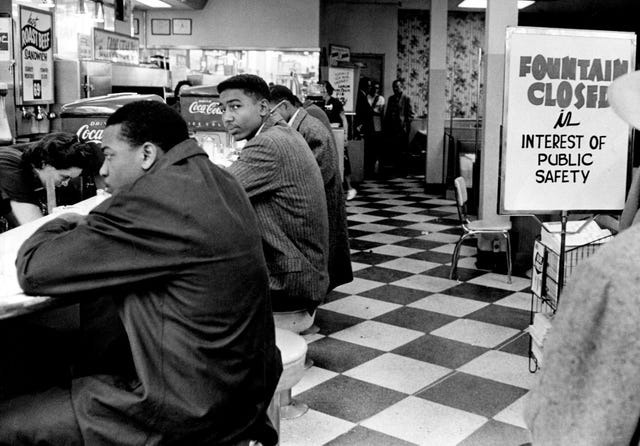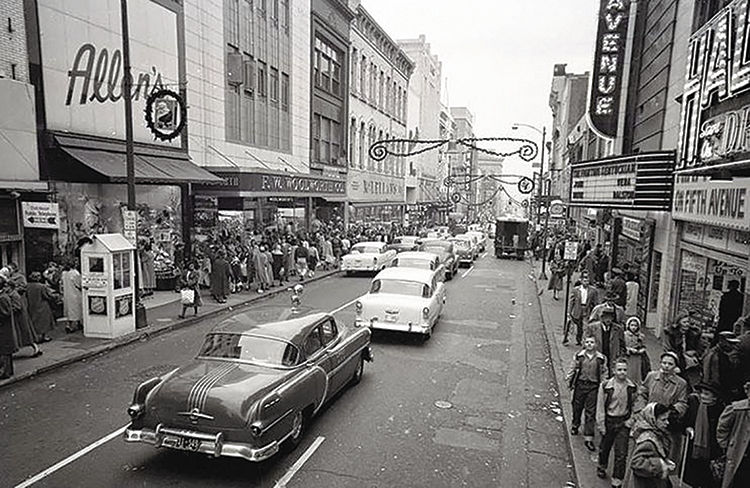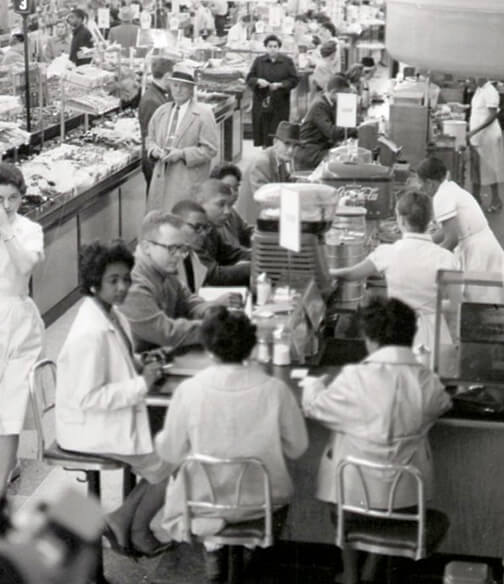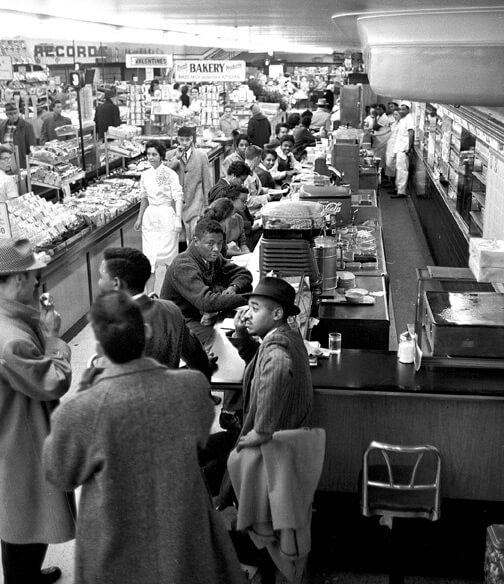The building at 223 Rep. John Lewis Way North holds a vital place in Nashville’s history. Completed in the 1890s, it first housed several small businesses before Woolworth opened one of its original “five and dime” stores there in 1913. In 1925, Woolworth added a lunch counter offering affordable meals to downtown shoppers and workers, but under the Jim Crow laws of the time, African Americans were still barred from dining at public lunch counters in Nashville.
Your Content Goes Here
Beyond the Counter Photo Gallery
Beyond the Counter is a historical photo gallery at the Woolworth Theatre created in partnership with the Nashville Public Library. This gallery depicts crucial scenes from the Civil Rights Movement that took place in Downtown Nashville.
The gallery is open to the public on Fridays from 4 – 5 PM. For group reservations, please email info@woolworththeatre.com.
A Turning Point for Equality
On February 13, 1960, after months of studying the principles of nonviolent resistance, a group of students launched a movement to challenge segregation at Nashville’s downtown lunch counters. Three groups of primarily Black college students from Fisk University, American Baptist College, and Tennessee A&I (now Tennessee State University) staged sit-ins at Woolworth, Kress, and McClellan. Though denied service and asked to leave, the students remained seated in peaceful protest.
Two weeks later, on February 27, more than 200 students returned to the lunch counters at Woolworth, Kress, McClellan, and Walgreens. Their nonviolent demonstration drew national attention when white citizens responded with violence—and faced no consequences. Among those arrested was John Lewis, then a student activist and future U.S. Congressman. His arrest at Woolworth that day was his first of nearly fifty over a lifetime of nonviolent protest.
On April 11, 1960, another wave of African American students and white allies arrived at Woolworth. When they approached the first-floor lunch counter, staff immediately closed it and stationed employees at the stairs to the mezzanine, allowing only white customers to access the upper counter—an unmistakable display of the city’s segregated practices. On April 19, a bomb destroyed the home of Civil Rights attorney Z. Alexander Looby, who had served as lead counsel for the student protesters. That same day, more than 4,000 Nashvillians, including John Lewis and Fisk University student Diane Nash, marched silently to the courthouse to confront Mayor Ben West. When Nash asked the mayor if he believed segregation at the lunch counters was morally right, he answered “no.” That moment marked the turning point toward desegregation in Nashville.
Although progress did not come overnight, by mid-May 1960, some downtown lunch counters began serving African American customers, inspiring similar nonviolent protests across the South. Today, the Woolworth building stands as a registered historic site within Nashville’s Fifth Avenue Historic District, recognized for its pivotal role in the Civil Rights Movement.
– Written in collaboration with the Nashville library. –
Your Content Goes Here
Remembering John Lewis – A Legacy of Progress
In the early 1960s, the segregated South witnessed a powerful movement for racial equality, and at the heart of this struggle stood John Lewis, a remarkable civil rights leader. His name became synonymous with courage, resilience, and peaceful resistance. Among his many significant contributions, one event that stands out is the Woolworth sit-ins in Nashville, TN.
As the chairman of the Student Nonviolent Coordinating Committee (SNCC), John Lewis played a pivotal role in organizing the Woolworth sit-ins. SNCC, a prominent civil rights organization, became a driving force behind the fight for justice and equality. Through strategic planning and nonviolent protest, Lewis and the SNCC garnered public support, sparking a transformative era in the civil rights movement.
Decades after the Woolworth sit-ins, John Lewis continued to champion civil rights and social justice throughout his life. His commitment to nonviolence, equality, and voting rights earned him widespread admiration and respect. As we look back on this pivotal moment in history, we honor the enduring legacy of John Lewis and the courageous young activists who fought for a more inclusive and just America.
Historical Moments:
- Organized nonviolent sit-ins during the Nashville Student Movement -1960
- Member of the Freedom Riders and became a pillar of the civil rights movement – 1961
- One of the “Big Six” leaders who attended the March on Washington – 1963
- The “Bloody Sunday” march Lewis participated in led to the Voting Rights Act of 1965
- Served as a U.S. Representative of Georgia’s 5th congressional district from 1987 til his passing in 2020



